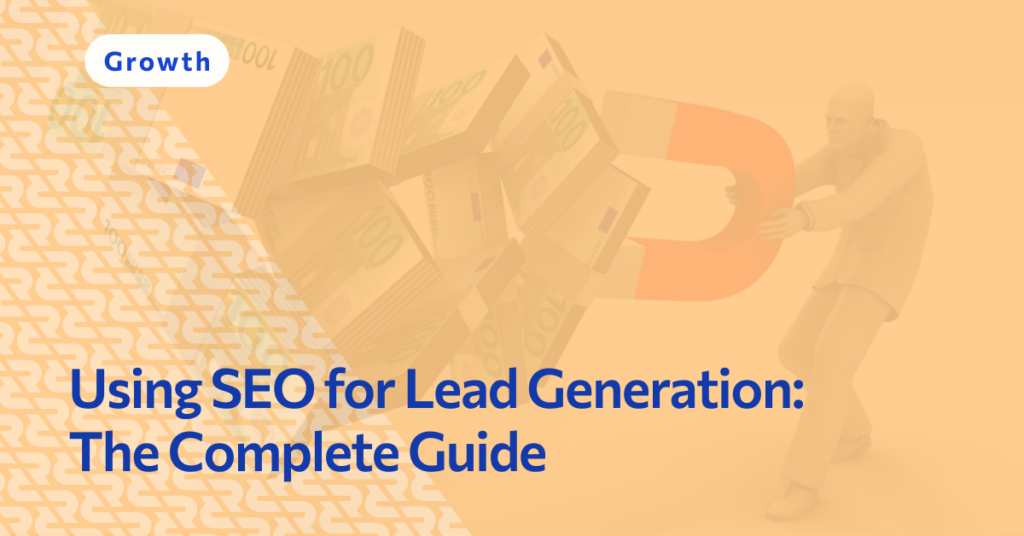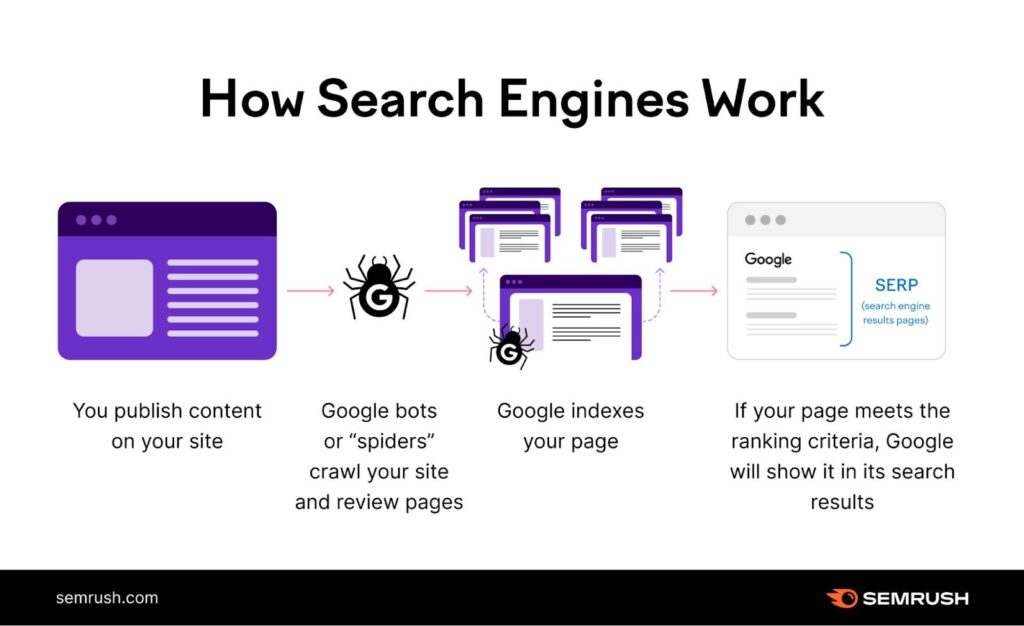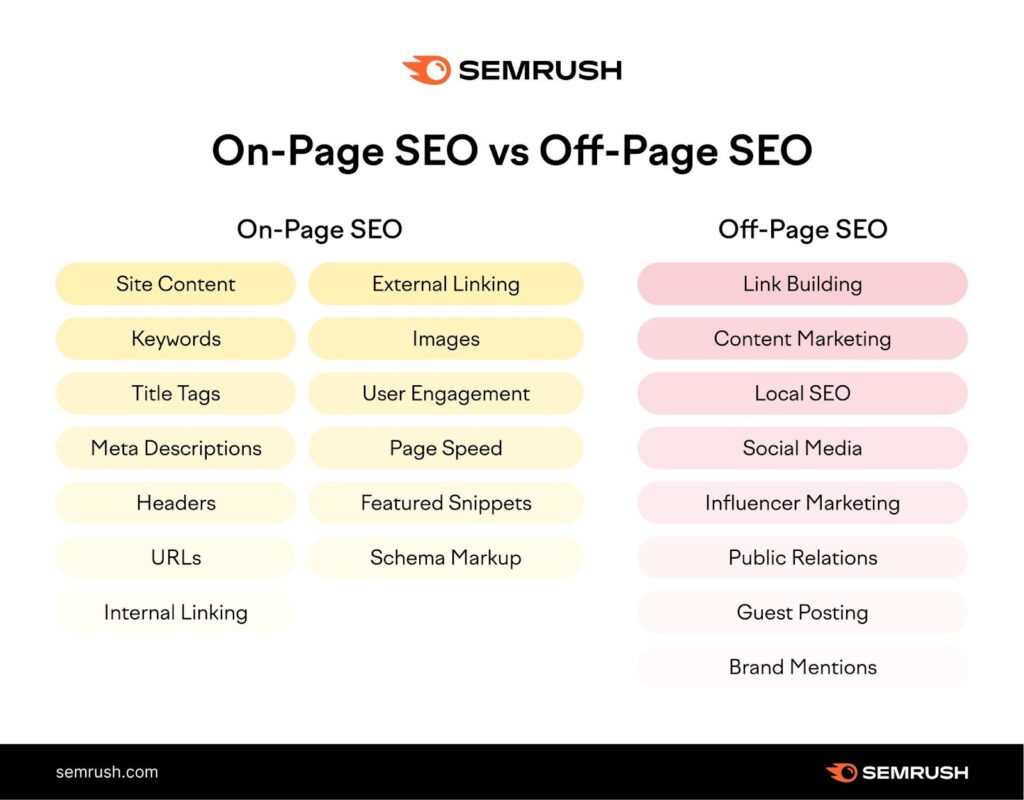Using SEO for Lead Generation: The Complete Guide

Do you know how to leverage SEO for lead generation? If not, you’re missing out on a huge opportunity for building up your sales pipeline. Search engines are the top way today’s B2B buyers are looking for information about their problems, potential solutions, and top providers on the market. If your site and your content aren’t ranking well, you’re pretty much invisible to your target audience.
But not to worry—in this complete guide, we’ll walk you through the basics of SEO for lead generation and every important aspect of a well-rounded SEO strategy. When you’re finished reading, you’ll be equipped with the knowledge, tactics, and tools you need to enhance your SEO efforts and yield better results right away.
Quick Takeaways:
- SEO enhances visibility by making it easy for search engines to find, crawl, and rank your content.
- Keyword research identifies the words and phrases your target audiences search for, and it lays the foundation for the rest of your SEO strategy.
- On-page SEO optimizes aspects of your own website, while off-page SEO focuses on building your visibility across the web. Both are essential for building a strong brand presence online.
- Technical SEO optimizes aspects of site performance, like loading speed and mobile-friendliness.
- It’s critical to measure and monitor key SEO metrics over time to remediate issues and adjust your strategy as trends evolve.
Understanding SEO and Its Impact on Lead Generation
Search engine optimization (SEO) is the process of increasing your website’s online visibility by enhancing its search engine results page (SERP) rankings. SEO involves optimizing several aspects of your website to make it easier for search engines to find, crawl, and rank it on their platforms.

The ultimate goal of SEO is to drive organic (non-paid) traffic to your website, where you can engage and convert new leads into your sales pipeline. Organic traffic is particularly valuable because it’s composed of visitors who are actively searching for products, information, and services related to your business (vs. those targeted through paid channels).
The fundamental components of SEO include:
- Keyword Research: Identifying the terms and phrases that potential customers use when searching for products or services online.
- On-Page Optimization: Refining individual web pages to rank higher in search engines.
- Off-Page Optimization: Activities outside your website that impact your rankings within search engine results.
- Technical SEO: Focusing on the technical aspects of a website to improve its foundation and structure.
Effective SEO strategies can significantly drive organic traffic, but their true value in lead generation lies in attracting the right kind of traffic. By targeting keywords and creating content that aligns with what your ideal customers are searching for, you increase the chances of attracting visitors who are more likely to convert into leads and eventually paying customers.
Moreover, high rankings in search results build credibility and trust among potential customers, further boosting the likelihood of lead conversion.
In the next sections, we’ll dive deeper into each foundational aspect of SEO for lead generation, sharing actionable strategies and tactics you can use to enhance your search-driven lead gen results.
Keyword Research: The Foundation of SEO for Lead Generation
Keyword research is like the compass that guides your entire lead generation strategy. The process involves identifying the words and phrases your target customers use in search engines when they look for products, services, and information relevant to your business.
Your keyword research informs everything from content creation to site architecture to off-page SEO strategies. The importance of doing it thoroughly can’t be overstated—without accurate keyword research, your SEO strategy is more like a guessing game than an intentional and targeted strategy.
Over time, keyword research can also provide important insight into audience needs, preferences, and online behaviors, helping you craft a strategy that more effectively generates and converts new leads.
Important aspects of keyword research include:
- Seed Keywords: Basic terms related to your business and use them as starting points
- Long-tail keywords: Longer and more specific phrases that can drive targeted traffic and are generally less competitive
- Search Intent: The purpose behind a user search (ex: get information or compare vendors)
- Keyword research tools: Software tools like SEMRush or Ahrefs that help you research keywords and plan your strategy at scale
- Competitive analysis: Keywords your competitors are ranking for that enable you to target competitive and gain an advantage
- Updating and monitoring: Regular reviews of changing SEO and keyword trends to ensure continued strategy relevance and effectiveness
Effective keyword research lays the foundation for accurate targeting and effective SEO practices across the rest of your strategy. The video below provides a helpful deep-dive into every step of the keyword research process from one of the top tools on the market, Ahrefs. You can use this to better understand the execution steps required and how to get started.
Next, we’ll explore how to optimize both on-page and off-page aspects of SEO to help you build a complete and well-rounded strategy.
On-Page SEO Techniques for Lead Generation
On-page SEO is what makes your website more attractive to search engine crawlers that determine how your site will rank on SERPs. It requires optimizing specific elements of your website structure, including:
- Title Tags: These are the clickable headlines displayed on search engine results pages (SERPs). They should be concise, include target keywords, and be compelling enough to encourage click-throughs.
- Headers (H1, H2, H3): Use header tags to structure content. The H1 tag is particularly important as it’s often considered the ‘headline’ of the page. Subsequent headers (H2, H3, etc.) help break down content into digestible sections.
- Meta Descriptions: These brief descriptions appear under the title tags in SERPs, summarize the page content, and usually include CTAs along with relevant keywords.
- Content Optimization: High-quality, informative, and engaging content is crucial. Your content should answer your audience’s questions, address their pain points, and include targeted keywords.
The key to effective on-page SEO is a hyper focus on the user experience. Content must be valuable and easy to read and navigate. Your site should be mobile-friendly and use responsive design for ease of use on any device. Internal links should naturally guide users to related content to enhance engagement.
In short: The experience of navigating your website should be smooth and not involve unnecessary extra steps on the part of your potential customers. On-page SEO ensures that happens.
Off-Page SEO Strategies to Boost Lead Generation
Off-page SEO refers to actions taken outside of your own website to impact your rankings within search engine results. It’s as crucial as on-page SEO and includes several strategies to enhance your website’s authority and online reputation, which are key factors in search engine algorithms. These tactics include:
- Link Building: Getting reputable websites to link back to your site. Backlinks are a significant ranking factor for search engines.
- Guest Blogging: Writing articles for other websites can boost exposure and establish your brand’s authority in your industry.
- Social Media Engagement: While social media signals don’t directly influence search rankings, they increase online visibility and traffic to your website.
- Online Community Engagement: Participating in forums, Q&A sites, and industry groups can be an effective way to showcase expertise and indirectly promote content.
Effective off-page SEO prioritizes quality over quantity, ensuring every backlink and externally published content asset is from an authoritative and trustworthy partner source. Backlink monitoring software can help you track your entire backlink profile to actively manage quality control.
By combining robust on-page and off-page SEO strategies, you can significantly enhance your website’s ability to generate leads. These efforts lead to increased visibility, credibility, and authority in your niche, all of which are critical in driving organic traffic and converting that traffic into leads.
Here’s a quick visual summary of both on-page and off-page SEO that helps capture how the two work together to drive more traffic and leads:

Technical SEO: Ensuring Your Website is Lead-Gen Ready
Last but not least, technical SEO is an essential part of optimizing search ranking for your business, and it encompasses the behind-the-scenes aspects of your website that influence performance. These include:
- Site Speed: Page loading times directly impact user experience and SEO rankings. Faster sites provide a better user experience, reducing bounce rates and potentially increasing conversions.
- Mobile Optimization: With the majority of online searches now performed on mobile devices, having a mobile-responsive website is crucial. Mobile optimization affects both user experience and search engine rankings, especially after Google’s shift to mobile-first indexing.
- User Experience (UX): A website that is easy to navigate and user-friendly is more likely to keep visitors engaged. UX factors like clear navigation, intuitive design, and compelling CTAs can have a significant impact on lead generation.
As with other components of SEO for lead generation, software tools to monitor site performance (ex: Google Search Console) are extremely effective in ensuring you can remediate issues quickly and identify opportunities to improve site performance in an ongoing way.
Measuring ROI on SEO for Lead Generation
Measuring the success of your SEO strategies is crucial for understanding their effectiveness in lead generation. It involves tracking specific metrics and using analytical tools to gather insights into how well your SEO efforts are translating into tangible business outcomes.
Be sure to set clear goals that outline what you want to achieve with your SEO efforts, and use analytics tools like Google Analytics to track your SERP rankings and performance. Make SEO reporting a frequent part of your overall marketing reporting strategy, including data-driven insights about rankings, traffic, user behavior, and conversion rates.
Key metrics to focus on include:
- Organic Traffic: The number of visitors coming to your site through search engine results. An increase in organic traffic is a good indicator of effective SEO.
- Search Engine Rankings: Positions of your keywords in search results. Higher rankings mean more clicks, conversions, and leads generated.
- Lead Quality and Conversion Rates: Measure how many visitors are converting into leads and the quality of these leads. High-quality leads are more likely to turn into paying customers.
- Bounce Rate: The percentage of visitors who navigate away from the site after viewing only one page. A high bounce rate might indicate irrelevant content or poor user experience.
- Click-Through Rate (CTR): The ratio of users who click on your search listing compared to the total number of users who viewed it. A high CTR suggests that your page title and description are relevant and appealing.
- Backlink Quality and Quantity: The number and quality of backlinks pointing to your website. Quality backlinks from authoritative sites can significantly boost SEO.
When you actively measure and monitor your SEO success, you can ensure your efforts are paying off and that the leads that you generate fit into your target audience.
Generate More Leads with RevBoss
If you’re looking for support in executing an outbound sales strategy that prioritizes SEO, RevBoss can help. Our outbound lead generation services and platform are custom-built for SaaS companies, startups, agencies, and other high-growth B2B companies.
Schedule a quick call with our team to learn how we can help you win more clients.
